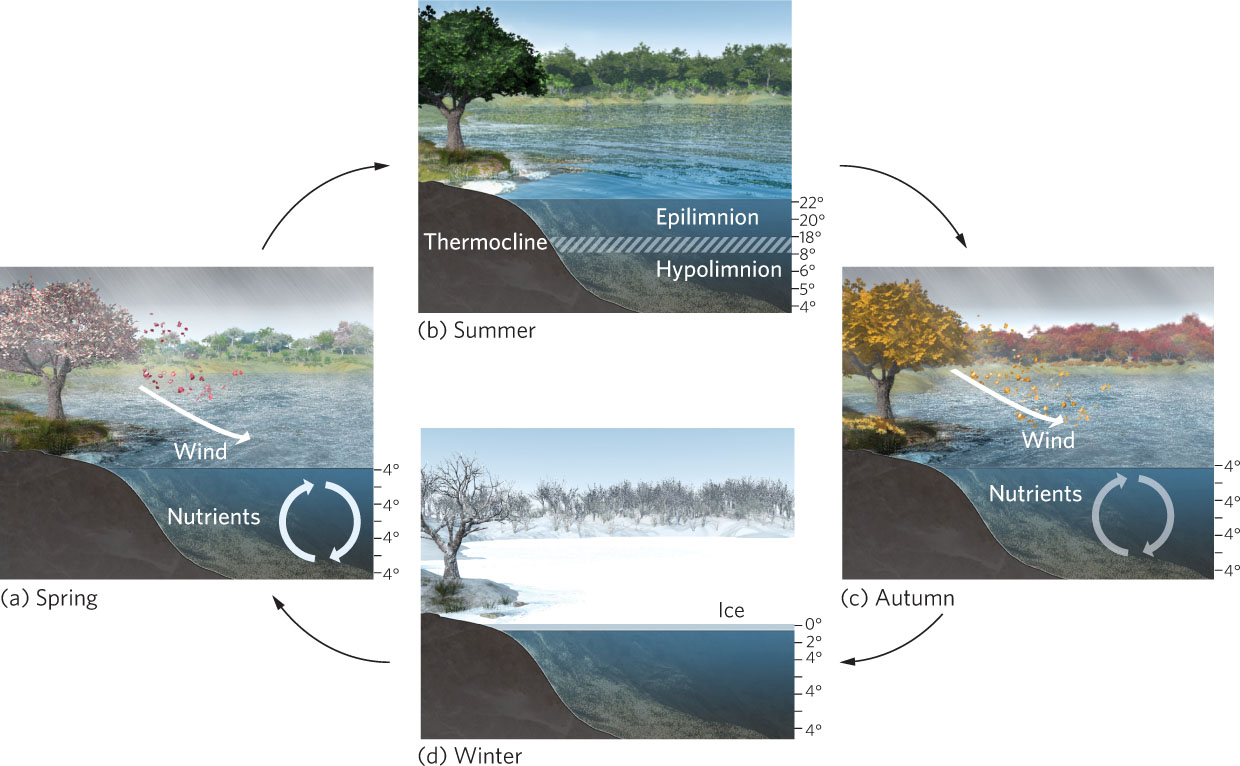
Figure 6.16 Circulation in temperate lakes. (a) In the spring, seasonal winds cause the lake water to mix, which brings nutrients from the sediments to the surface water and brings oxygen from the surface water down to the deeper water. (b) During the summer, the surface water warms faster than the deep water, so the lake experiences thermal stratification. The zone at which water changes rapidly with depth is known as the thermocline. (c) In autumn, the surface water cools, stratification breaks down, and autumn winds cause the surface water and deep waters to mix once again. (d) In winter, the surface waters are exposed to freezing temperatures, so ice forms at the surface. Because 4°C water is the most dense, the bottom of the lake does not freeze.